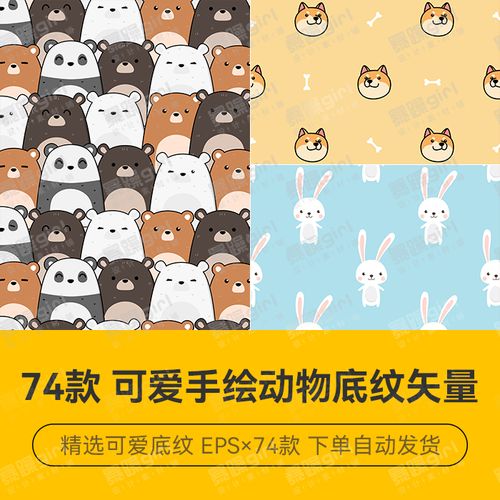admin管理员组文章数量:1794759

uniapp+微信小程序获取openId,获取access
目录
1.前期准备
2.用户订阅消
3.获取openId(uniapp)
4.获取access_token
5.发送消
6.请求的代码Springboot(自己写有发送请求方法的可以不用看)
1.前期准备
在微信公众号申请订阅消
在公共模板这里选用模板,模板种类跟小程序设置的类目有关,只有特殊的类目有长期订阅模板
类目可以在设置中修改
2.用户订阅消选用模板后点击详情查看模板的id
在小程序上编写以下代码(这个是uniapp框架的代码)
uni.requestSubscribeMessage({ tmplIds:['1QO7f6SdIiw7loXtIhaIL5IKl4Ze0lS2moDVnjaAlLQ'], complete:(res)=>{ console.log(res) } })微信原生大概是这样的,没试过哈
wx.requestSubscribeMessage({ tmplIds:['1QO7f6SdIiw7loXtIhaIL5IKl4Ze0lS2moDVnjaAlLQ'], complete:(res)=>{ console.log(res) } })参考链接
其中tmplIds就是我们选用模板的id,是个数组,最多三个。
用户选择确定后便可以进行消发送。
3.获取openId(uniapp)获取code
uni.login({ provider:"weixin", success:(loginRes)=>{ console.log(loginRes.code); } })后台通过code获取用户的openId
public String getOpenId(HttpServletRequest request, String code){ SendParam sendParam = new SendParam(); sendParam.setUrl("api.weixin.qq/sns/jscode2session"); Map<String,String> param = new HashMap(); param.put("appid","微信小程序的appid"); param.put("secret","微信小程序的secret"); param.put("js_code","用户通过登录方法获取的code"); param.put("grant_type","authorization_code"); sendParam.setGetParam(param); SendReturn sendReturn = SendUtils.sendGet(sendParam); System.out.println(sendReturn.getReturnString()); return ReturnData.reJson(ReturnCode.MC001); }用get请求访问
api.weixin.qq/sns/jscode2session例如
api.weixin.qq/sns/jscode2session?appid=xxx&secret=xxx&js_code=xxx&grant_type=authorization_code
访问成功就能获取到用户的openId
4.获取access_token public String getAccessToken(){ SendParam sendParam = new SendParam(); sendParam.setUrl("api.weixin.qq/cgi-bin/token"); Map<String,String> param = new HashMap(); param.put("grant_type","client_credential"); param.put("appid","小程序的appid"); param.put("secret","小程序的secret"); sendParam.setGetParam(param); SendReturn sendReturn = SendUtils.sendGet(sendParam); return ReturnData.reJson(ReturnCode.MC001); }用get请求访问
api.weixin.qq/cgi-bin/token例如
api.weixin.qq/cgi-bin/token?grant_type=client_credential&appid=xxx&secret=xxx
访问成功即可获取到access_token
access_token是有时效的,默认7200秒。使用的时候记得看是否过期。
5.发送消 public String send(){ SendParam sendParam = new SendParam(); sendParam.setUrl("api.weixin.qq/cgi-bin/message/subscribe/send?access_token=57_CRjtQyjioD2Qe46gxDicfRifwTN-9kfteW9Onc1ZlWizniNXH1ww1j7FUhWc1WXM9ja7GXRPm_mtTIEdGdt5a7lCH9118Axz2Rm0Ku2h57dhMSYiAtwP6QxBr1h62x55bN4bsb7ajFlZ5m73XCSaAAALQG"); Map param = new HashMap(); param.put("touser","otnoE5Ry_89dahJ2_OhxIXVcLBPg"); param.put("template_id","1QO7f6SdIiw7loXtIhaIL5IKl4Ze0lS2moDVnjaAlLQ"); Map dataMap = new HashMap(); dataMap.put("thing1",new HashMap<String,String>(){{put("value","2");}}); dataMap.put("thing2",new HashMap<String,String>(){{put("value","2");}}); dataMap.put("thing3",new HashMap<String,String>(){{put("value","2021-01-01 00:00:00");}}); param.put("data", dataMap); sendParam.setPostParam(param); SendReturn sendReturn = SendUtils.SendPost(sendParam); return ReturnData.reJson(ReturnCode.MC001); }发送post请求!!!post请求!!!
api.weixin.qq/cgi-bin/message/subscribe/send?access_token=xxxxx其中access_token就是第四步获取到的access_token,参数要写到url中
之后就是要发送的数据
touser:要发送给用户的openId,获取方法看第三步 template_id:模板id,第一步选择模板时可以看到模板的id data:要发送的数据,根据模板要求的数据来装配比如模板要求的数据是这样的
那么最后拼凑的数据是这样的
data:{ thing1:{value:"123"}, thing2:{value:"123"}, thing3:{value:"123"}, }整体数据格式
{ "touser":"XXXX", "template_id":"xxxxx", "data":{ "thing1":{"value":"123"}, "thing2":{"value":"234"}, "thing3":{"value":"456"} } }用postMan看的话是这样的
请求成功后即可。
要注意的是,如果用的是一次性模板,用户订阅一次,服务端才能发送一次,若需要发送两次就需要用户订阅两次(也就是说要订阅两次)!!!!!????
长期模板的话,用户点击订阅后就不需要重复订阅,服务端也能一直发送消。
6.请求的代码Springboot(自己写有发送请求方法的可以不用看)代码垃圾,轻点喷 勿喷
SendParam package ??????; import org.springframework.http.HttpMethod; import java.util.Map; public class SendParam<T> { private String url; private Object postParam; private Map<String,String> getParam; private HttpMethod sendType; private Class<T> classTr; public SendParam() { this.sendType = HttpMethod.GET; } public String getUrl() { return url; } public void setUrl(String url) { this.url = url; } public Object getPostParam() { return postParam; } public void setPostParam(Object postParam) { this.postParam = postParam; } public Map<String, String> getGetParam() { return getParam; } public void setGetParam(Map<String, String> getParam) { this.getParam = getParam; } public HttpMethod getSendType() { return sendType; } public void setSendType(HttpMethod sendType) { this.sendType = sendType; } public Class<T> getClassTr() { return classTr; } public void setClassTr(Class<T> classTr) { this.classTr = classTr; } } SendReturn package ???????; import org.springframework.http.HttpStatus; public class SendReturn<T> { private boolean isSuccess; private String returnString; private T obj; private HttpStatus statusCode; private int statusCodeValue; public SendReturn() { this.isSuccess=true; } public boolean isSuccess() { return isSuccess; } public void setSuccess(boolean success) { isSuccess = success; } public String getReturnString() { return returnString; } public void setReturnString(String returnString) { this.returnString = returnString; } public T getObj() { return obj; } public void setObj(T obj) { this.obj = obj; } public HttpStatus getStatusCode() { return statusCode; } public void setStatusCode(HttpStatus statusCode) { this.statusCode = statusCode; } public int getStatusCodeValue() { return statusCodeValue; } public void setStatusCodeValue(int statusCodeValue) { this.statusCodeValue = statusCodeValue; } } SendUtils package ??????; import com.google.gson.Gson; import org.springframework.beans.factory.annotation.Autowired; import org.springframework.context.ApplicationContext; import org.springframework.http.*; import org.springframework.stereotype.Component; import org.springframework.web.client.RestTemplate; import javax.annotation.PostConstruct; import java.util.Map; @Component public class SendUtils { private static RestTemplate restTemplate; @Autowired ApplicationContext applicationContext; @PostConstruct public void init() { SendUtils.restTemplate = applicationContext.getBean(RestTemplate.class); } private static Gson gson = new Gson(); /** * 发送get请求 * @param send * @return */ public static SendReturn sendGet(SendParam send){ String url = send.getUrl()+"?"; if(send.getGetParam()!=null){ Map<String,String> map = send.getGetParam(); for(Map.Entry<String,String> entity : map.entrySet()){ url += entity.getKey()+"="+entity.getValue()+"&"; } url = url.substring(0,url.length()-1); } SendReturn sendReturn = new SendReturn(); try{ ResponseEntity<String> responseEntity = restTemplate.getForEntity(url, String.class); if(send.getClassTr()!=null){ Object o = gson.fromJson(responseEntity.getBody(),send.getClassTr()); sendReturn.setObj(o); } sendReturn.setStatusCode(responseEntity.getStatusCode()); sendReturn.setStatusCodeValue(responseEntity.getStatusCodeValue()); sendReturn.setReturnString(responseEntity.getBody()); }catch (Exception e){ System.out.println(e); sendReturn.setSuccess(false); } return sendReturn; } /** * 发送post请求 * @param send * @return */ public static SendReturn SendPost(SendParam send){ SendReturn sendReturn = new SendReturn(); try{ ResponseEntity<String> responseEntity = restTemplate.postForEntity(send.getUrl(),send.getPostParam(),String.class); if(send.getClassTr()!=null){ Object o = gson.fromJson(responseEntity.getBody(),send.getClassTr()); sendReturn.setObj(o); } sendReturn.setStatusCode(responseEntity.getStatusCode()); sendReturn.setStatusCodeValue(responseEntity.getStatusCodeValue()); sendReturn.setReturnString(responseEntity.getBody()); }catch (Exception e){ System.out.println(e); sendReturn.setSuccess(false); } return sendReturn; } }修改请求配置(这里用的是okhttp哈)
RestTemplateConfig package ????; import org.springframework.context.annotation.Bean; import org.springframework.context.annotation.Configuration; import org.springframework.http.client.OkHttp3ClientHttpRequestFactory; import org.springframework.web.client.RestTemplate; /** * 数据请求配置 */ @Configuration public class RestTemplateConfig { @Bean public RestTemplate restTemplate() { return new RestTemplate(new OkHttp3ClientHttpRequestFactory()); } }maven上要加上okhttp3和gson的依赖哈
pom.xml
<dependency> <groupId>com.squareup.okhttp3</groupId> <artifactId>okhttp</artifactId> </dependency> <dependency> <groupId>com.google.code.gson</groupId> <artifactId>gson</artifactId> <version>2.8.5</version> </dependency>最后能不能跑我是不知道了,我也没单独拆开测试过,我觉得是应该能跑的,该写的,该配置的都贴在上边了,祝好运!
版权声明:本文标题:uniapp+微信小程序获取openId,获取access 内容由林淑君副主任自发贡献,该文观点仅代表作者本人, 转载请联系作者并注明出处:http://www.xiehuijuan.com/baike/1686957696a122112.html, 本站仅提供信息存储空间服务,不拥有所有权,不承担相关法律责任。如发现本站有涉嫌抄袭侵权/违法违规的内容,一经查实,本站将立刻删除。























发表评论